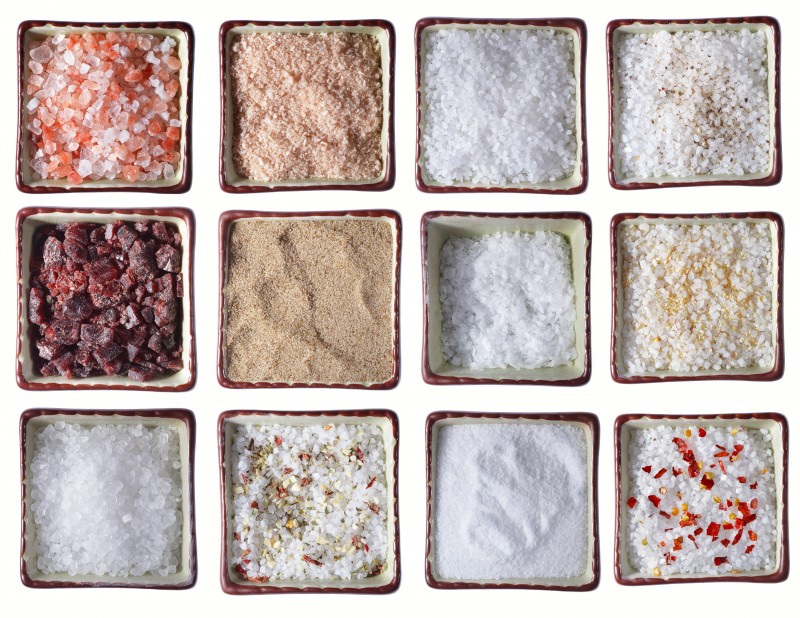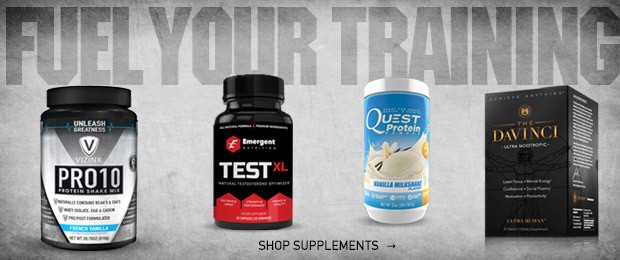
This article was inspired by a number of clients asking questions as of late regarding their salt intake. In particular, those questions looked a lot like, “I decreased my salt intake a few years ago and no longer salt my food. Any suggestions on low salt seasoning?” I've also received, “How much salt should I use? Not much, right? I don’t want to bloat.” The overall theme of the questions I received was generalized around the assumption that salt intake in any capacity is a negative thing. Now, can it be negative when consumed in excess? Absolutely. I want to get that obvious fact out of the way now before someone scrolls through this article straight to the comments to unleash their keyboard fury. However, what I have been finding is that folks are straying from salt intake even at normal and healthy levels. Why? Let’s dive in, but first, let’s go through some basics.
What is salt and what does it do?
There are many variations of salt, but in essence, salt is a mineral comprised of mostly sodium chloride (NaCl), which is found in rocks, earth, and our oceans. Edible salt that we consume is processed from salt mines and by evaporating sea salt. Sodium is a vital mineral that we need to consume through our diet to maintain proper blood flow and pressure, maintain electrolyte balance, and influence muscle contraction and nerve function. Salt is literally critical for human life and function, but for the sake of this article, we will focus on muscle function and performance.
RECENT: The Coach Rulebook: 5 Rules to Follow
Sodium plays a role in the communication between the nervous system and muscle contraction (the sodium-potassium pump to create action potentials and control body movement). Before we experience a muscle contraction, our muscle fibers receive an electrical signal to fire, in part due to sodium release in the nerve cells. Once our muscles sense this signal, our muscle fibers shorten and contract. So we obviously may be thinking about this from a skeletal muscle standpoint, but don’t forget that your heart is a muscle too. Without enough sodium intake, our muscles cannot contract properly. This obviously leads to some serious issues, especially for athletes.

Image credit: ferli © 123rf.com
Why are we told to limit salt consumption?
So if salt is a vital mineral and necessary for muscle contraction (i.e. strength, hypertrophy, gains), why are we told not to consume much of it? Great question! If you look back in the history of food production and guidelines, the Dietary Guidelines for Americans wasn’t even created until the 1980’s. At the time, processed food production and consumption was on the rise and upwards of 80% of sodium in the American diet came from processed foods, five percent from whole foods, and 15% from added salt for flavoring. So of course, at the time and even now, many Americans consume an unhealthy amount of salt due to eating too much processed shit — not because sodium is inherently bad for you.
Anything in excess is rarely ever a good thing. So let’s consider those of us who eat primarily whole foods on a daily basis. Why are we given the same recommendations to limit our salt intake as those who eat McDonald's regularly? It doesn’t really make sense, and this is where “salt is bad” is taken out of context. There is salt found naturally in whole foods and meats, so we do consume it regardless, but the amount is far less than our processed other halves. I would fare to say those who are super “clean” eaters may be under-consuming salt without realizing it.
What happens if we consume too little sodium?
There are a number of issues associated with consuming too little sodium, and some are even life-threatening. Studies have shown that low-sodium diets may lead to:
- Increased insulin resistance
- Increased risk of heart failure (if you don’t consume sodium your muscles don’t contract properly, and like I mentioned above, your heart is a muscle)
- Increased risk of diabetes
- Higher risk for hyponatremia (more common in athletes, but this occurs when your sodium to water balance is out of whack and your electrolytes are too low, which can cause symptoms such as nausea and vomiting, headache, muscle weakness, and, in severe cases, coma)
This reminds me of bodybuilding prep when athletes cut their sodium the day of or even days before the show in hopes of looking leaner. I’ve seen athletes pass out back stage or complain of heart palpitations — it is crazy! For the most part, if you think you have to cut sodium in order to be stage-ready, you just didn’t get lean enough for the stage in the first place. One aspect of sodium consumption is that it plays a role in fluid retention (intracellular and extracellular). The thought process behind pulling sodium before a show is based on the hope that you will lose subcutaneous water (water underneath the skin) and look dryer and leaner. However, it seems some folks fail to remember that salt also pulls water into the muscle cell. If you do not consume enough salt, your muscle cells will not retain water or fullness, and as a result, you will look flat. You do not have a choice as to where you will lose water from in your body when you manipulate sodium, so attempting this method is very risky. Not only is it a health risk, but the athlete usually just ends up looking flat and soft.
What are the dangers of too much sodium?
Clearly, there are dangers associated with consuming too much salt, such as:
- Increased risk of cardiovascular disease (sodium increases blood volume, so if there's too much it will put unnecessary stress on the vessels and heart)
- Oedema (swelling of hands and feet, also known as fluid retention)
- Kidney stress (your kidneys simply have to work harder to remove waste if salt is too high)
- Hypertension (high blood pressure, again related to increased blood volume)
- Bloating
Like I said, anything consumed in excess is rarely a good thing. But that doesn’t mean that the substance itself is bad for us. As long as we meet our daily needs and our performance is on point, we will be in a good place.
Image credit: Elena Moiseeva © 123rf.com
What are the different types of salt and how do they differ?
Fortified Table Salt
Fortified table salt (or iodized salt) is simply table salt mixed with iodine. Iodine is a micronutrient that prevents intellectual and developmental disabilities and thyroid problems. Iodine is found in the earth and can be absorbed by vegetables. However, iodine uptake and presence in foods depends highly on where you live. Like you would now see fortified cereal, it is simply added to salt to ensure we get the small but essential amount we need. There's nothing particularly fancy here.
Sea Salt
Sea salt is exactly what its name states: it is evaporated from seawater. From a health and content perspective, it is actually very similar to mineral salt, but less processed. So if that is your jam, go for it, but it is basically the same thing. However, apparently now they are finding pieces of plastic in sea salt because of excessive ocean pollution. Sad.
Himalayan Salt
Himalayan salt is a rock salt found near the Himalayans and has recently grown in popularity due to alleged health markers. Himalayan salt is technically the most “pure” salt, in that it is processed the least so it can contain more minerals other than just sodium chloride or fortified with iodine. Some will use this salt as an air purifier, natural digestive aid, sleep aid, etc. Again, there are many claims but none to my knowledge have technically been proven.
Epsom Salt
This is actually a curve ball, but I wanted to throw it in because it is often confused. Epsom salt is not sodium chloride but a mix of magnesium and sulfate. This mean that unlike the others mentioned above, it simply looks like table salt but is not really salt at all. Epsom salt can be consumed but it is more popular due to other health and beauty benefits. There are anecdotal claims that Epsom salt baths can help reduce muscle soreness (hence why it is popular with athletes), boost magnesium levels, reduce stress, eliminate toxins, etc. I’ve taken Epsom salt baths here and there and do find them to be relaxing, but I would like to see more research about the additional claimed benefits.
How much salt should you be consuming?
According to the FDA, the average daily sodium intake for Americans is 3,400 milligrams per day, whereas the upper safe limit is recommended to be 2,300 milligrams per day, and no more than 1,500 milligrams of sodium per day is required for healthy bodily functions. So, take that as you will, but I believe every person's daily requirement is different, especially in regard to athletes. To be honest, I am not sitting here “tracking” my salt intake. I eat primarily whole foods 80% of the time, and if I eat a shitty off-meal I get bloated AF so I know my personal limit. But I do add a few dashes of table salt to each meal I have throughout the day, as well as in my intra-workout drink.
MORE: Rice Cakes and the Antiquation of Peaking Methods
Again, if you are eating a healthy balanced diet, and are pretty active, adding in some salt to your meals may actually aid you rather than hinder you. My advice would be to truly analyze your food intake and ensure you are getting enough sodium in your diet to fuel your performance and goals. Again, think about what sodium does in your body as it relates to blood volume and muscle function. How does blood volume relate to hypertrophy and strength? If you limit your salt intake purposefully (assuming you don’t have any preexisting conditions such as high blood pressure, cardiovascular disease, etc.) you may be doing yourself a disservice when it comes to your performance goals. Consider sodium intake as it relates to you and your body, your current nutrition and training regimen, and your goals. This will help prevent you from taking guidelines out of context or using bro science to “dry out” for the stage. Be smart and stay salty.
References
- Antonio, Jose, et al. Essentials of Sports Nutrition and Supplements. Humana Press, 2014.
- Office of the Commissioner. “Press Announcements - FDA Issues Draft Guidance to Food Industry for Voluntarily Reducing Sodium in Processed and Commercially Prepared Food.” U S Food and Drug Administration Home Page, Office of the Commissioner, 2016, www.fda.gov/NewsEvents/Newsroom/PressAnnouncements/ucm503874.htm.
- “Should We Eat Less Salt?” Archives of Cardiovascular Diseases, Elsevier Masson, 11 Apr. 2013, www.sciencedirect.com/science/article/pii/S1875213613000302. “FDA issues draft guidance to food industryFDA.gov











